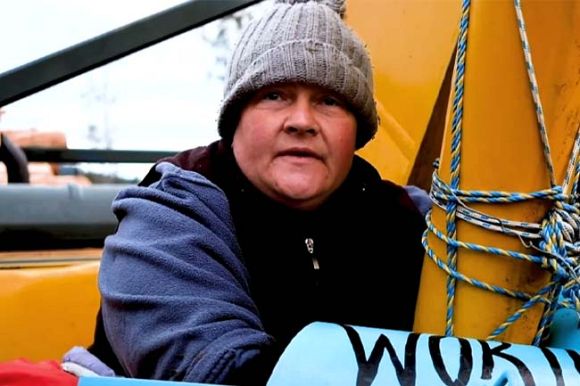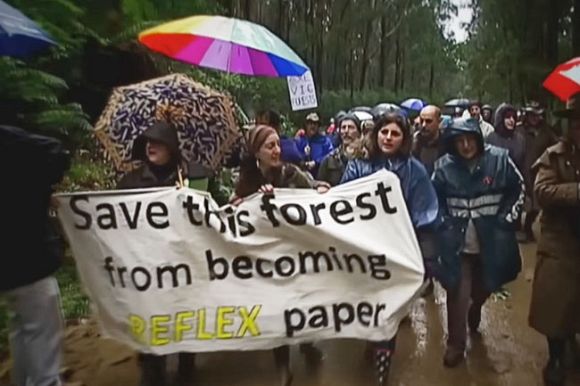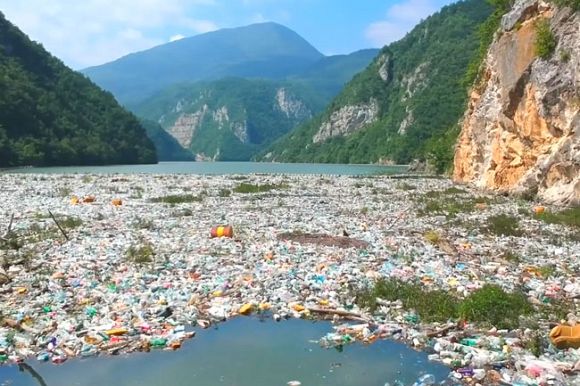Australia's cruel treatment of our wildlife has been normalised by the mainstream media and an unsympathetic government, writes Sue Arnold.
IS THE U.S. mainstream media normalising Donald Trump as though he’s a legitimate politician and a potential presidential candidate?
This is an essential question. One that many non-mainstream journalists, academics and legal experts are asking. Ian Masters, a U.S.-based Australian journalist responsible for Background Briefing, a daily podcast on U.S. politics, bit the bullet this week.
Well-known in the U.S., Ian is a respected, objective and well-informed professional. His interviews with some of the best American minds are always deeply informative.
A deep dive into the question of Trump’s “normal” in the interview opens up Pandora’s box as it becomes more and more evident the public is being subtly and regularly coached into accepting the unacceptable. Think of gun violence in the U.S., with more than 40,000 people killed last year.
Yet household cupboards and safes are replete with weapons — more guns than the population. Most Americans could repeat the regular mantra made by politicians after a mass shooting: “Our thoughts and prayers are with the family.”
Imagine what the U.S. would become with Trump as the next president. A situation impossible to describe as “normal” with executions, fascism and a devastating loss of democracy.
In Australia, a different version of making the unacceptable “normal” is being perpetrated on the public.
We kill animals, not people. Australia’s environmental history is a global scandal.
Millions of koalas were killed for the fur trade in the early 1900s. Scientists estimate the total number of massacred koalas in one year alone was approximately 800,000. Shot, poisoned and trapped, the animals died horrific deaths.
The Australian National University estimated the current population of koalas to be less than 1% of the population that existed before the fur trade almost wiped them out. It took the American Secretary of Commerce, Herbert Hoover, to stop the trade.
From 2019-2020, catastrophic wildfires killed an estimated 60,000 koalas. Despite this painful death toll, no laws were changed or introduced to ensure permanent protection of habitat.
Instead, the remaining koalas are ongoing targets for destruction by the forestry industry, urbanisation projects, mining and infrastructure causing significant localised extinctions.
Millions of kangaroos and wallabies have been shot by the kangaroo industry. In 2019, according to Animals Australia, 1.57 million kangaroos were killed in the commercial industry. As many as 400,000 dependent young kangaroos in NSW and Queensland are either clubbed to death every year or left to starve after their mothers are killed.
Animal Law estimates in the last 20 years, approximately 90 million kangaroos and wallabies have been lawfully killed for commercial purposes.
A newly published book, Australia’s Megafires, with contributions from over 200 scientists, describes the Black Summer fires of 2019-2020 as cataclysmic in extent and severity:
More than 500 plant and animal species had the entire area they are known to habitat burnt out. At least 100 threatened species had more than 50 per cent of their range burnt.
More than 360 species and ecosystems became nationally threatened for the first time, or pushed much closer to extinction.
The book reveals Australia’s ecosystems are in chronic decline.
Perhaps one of the most significant statements indicates:
Biodiversity is often sacrificed because of the prevailing mindset that there is a hierarchy of what to protect in disasters.
First human life, then infrastructure and finally biodiversity.
If biodiversity loss continues in the last place, it will inevitably lead to unrecoverable loss of some of our most significant species and natural environments.
The megafires resulted in more than 60 billion leaf litter invertebrates dying. Insects are critically important as they create rich soil, providing a key food source for bandicoots and lyrebirds.
Seventy-two species of bird face extinction today with 69% of Australia having lost one bird species, with some parts of the country losing up to 17 birds. The swift parrot is currently facing extinction as industrial logging of native forests in Tasmania destroys critical habitat.
With an estimated 12 species of bandicoots in Australia, approximately half are now extinct.
Australia is a world leader in mammal species extinctions. Around 87% of species are found nowhere else in the world.
In the marine environment, things are not much better.
Scientists have found:
'More than 500 common species of fish, seaweed, coral and invertebrates that live on reefs around Australia have declined in the past decade... experts warn “not all is well in the ocean”.'
The Guardian reports scientists monitored over 1,057 species, finding 57% had declined.
The study indicates that increasing ocean temperatures caused by climate change present an existential threat to marine ecosystems and commercial fisheries.
As the Federal Government moves closer to approving deep sea mining, ocean creatures are facing exponentially increasing threats. Greenpeace indicates habitats will be destroyed and animals smothered, with profound impacts on all sea life.
Domestic animals do not fare well. The most current example is the 16,000 sheep and cattle stuck on one of those dreadful vessels carrying animals to Israel’s abattoirs. The animals have been at sea for 25 days with no relief in sight. Heatwave conditions add to their misery.
Latest reports by the Livestock Exporters Council indicate the animals may face another 33 days at sea by taking the long route – avoiding the Red Sea – to Israel. To allow livestock to endure an anticipated 63 days in total on the water with no sunshine, grass or freedom to move is not “normal”.
The trade can only be described as mindlessly cruel.
Prime Minister Anthony Albanese’s Government reversed the blanket ban imposed by the Gillard Government in 2011.
With ongoing efforts by the Albanese Government to transform nature into an economic marketplace while continuing to ignore the many scientific experts who are calling for an end to native forest logging (urgently needed legislation to protect the habitats of endangered species and real action on climate change), the environmental scenario looks increasingly dismal.
Between former PM Scott Morrison and Albanese, with little focus from the Australian Greens, the public is encouraged to believe this is “normal”. Countries can kill off their unique wildlife, ignore climate change impacts on the natural environment and approve any project that ensures further biodiversity loss.
A major proponent of the new “normal” is mainstream media which continues to sow doubt and misinformation along with no coverage of the extraordinary plight of this ancient continent’s environment.
Sue Arnold is an IA columnist and freelance investigative journalist. You can follow Sue on Twitter @koalacrisis.
Related Articles
 This work is licensed under a Creative Commons Attribution-NonCommercial-NoDerivs 3.0 Australia License
This work is licensed under a Creative Commons Attribution-NonCommercial-NoDerivs 3.0 Australia License
Support independent journalism Subscribe to IA.

















